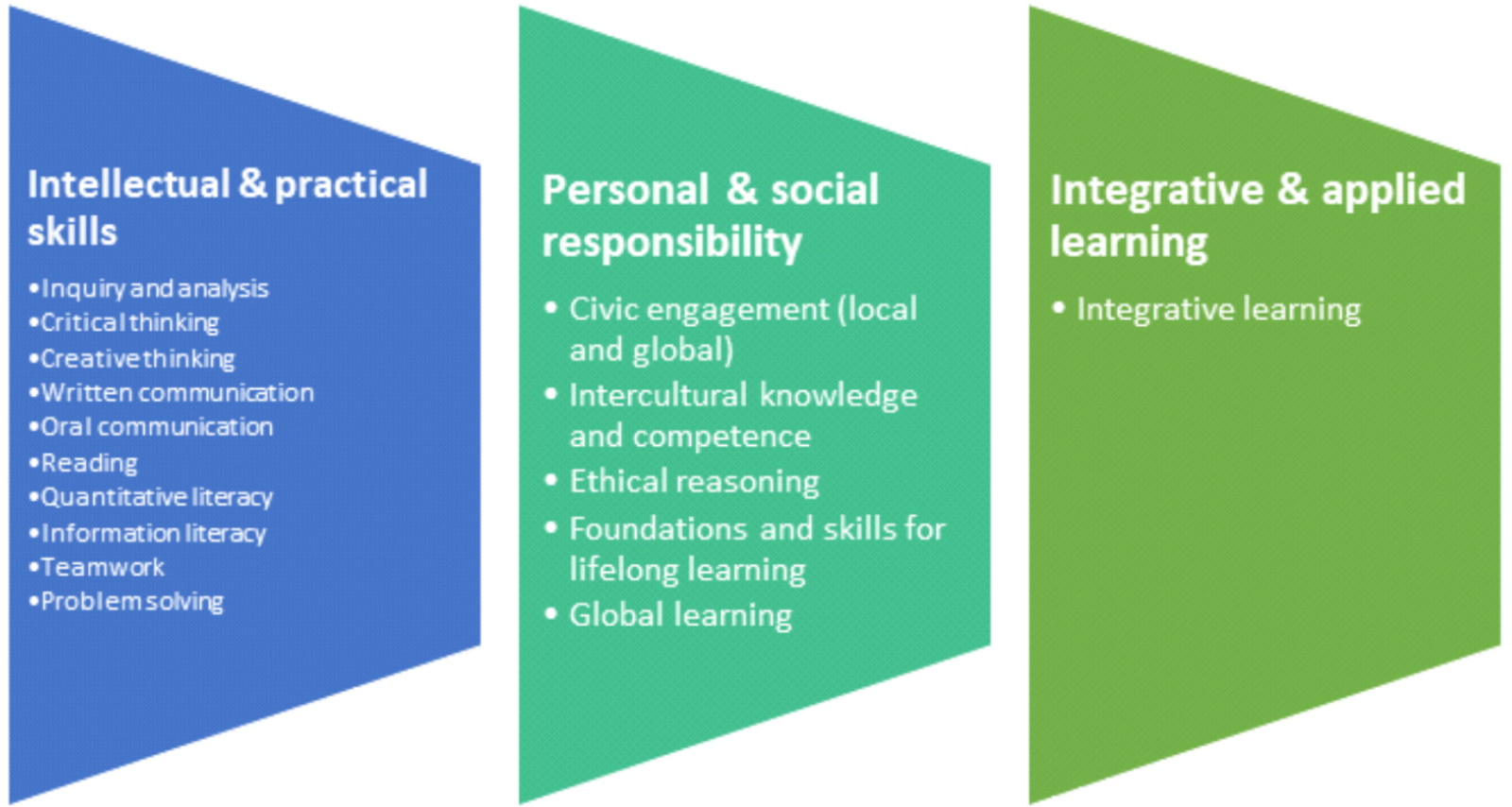Assessing ePortfolios
ePortfolios can:
- Provide assessment of learning outcomes;
- Provide evidence of performance over time;
- Demonstrate progress towards achievement of learning objectives;
- Serve as summative or formative assessment;
- Measure personal attributes;
- Enhance interaction between students and faculty;
- Stimulate reflective learning strategies; and
- Expand understanding of professional competence.
Planning to assess an ePortfolio:
- Start by identifying the learning objectives for the assignment or ePortfolio
- Determine what types of entries would best match those learning objectives
- Set the criteria for evaluating the assignment, such as rubric, rating scale, or checklist
- Explain the criteria for evaluation to the students to ensure they understand how the assignment or ePortfolio will be assessed
- Review the submitted assignment or ePortfolio
- Provide feedback to the student
How to evaluate an ePortfolio:
When evaluating an ePortfolio, multiple approaches can be taken. The first is to evaluate achievement of the defined learning objectives. The second is to evaluate the reflectiveness of the ePortfolio. The last is to evaluate the ePortfolio as a whole. These can be done with rubrics, checklists, or other documentation, but qualitative evaluation of learning should also be considered. To document achievement of learning objectives, faculty can develop or find a rubric pertaining to the learning objectives. Another option is to use the AACU VALUE rubrics.
AACU VALUE rubrics
The Association of American Colleges and Universities (AACU) developed the sixteen Valid Assessment of Learning in Undergraduate Education (VALUE) rubrics as part of its Liberal Education and America’s Promise (LEAP) initiative. VALUE rubrics can be utilized in diverse learning pathways and fields of study to assess if students have made progress towards or achieves the learning objectives defined by faculty or the institution or have achieved learning outcomes considered essential by employers. Since 2009, VALUE rubrics have been utilized for assessment across the United States and internationally. They have been approved for use in all regional and some professional self-study reports for accreditation. The VALUE rubrics cover sixteen integrative topics across three domains.
The rubrics are available for download at: https://www.aacu.org/value-rubrics

If evaluating the reflectiveness of a portfolio, the faculty might consider a rubric containing criteria related to clarity, relevance, analysis, interconnections, and self-criticism. If holistically evaluating an ePortfolio, the faculty might consider a rubric containing criteria related to selection of artifacts, reflection/critique, use of multimedia, citations, navigation, layout and readability.
How an ePortfolio can contribute to assessment
An ePortfolio can be utilized for the assessment of learning and for the assessment for learning. In the assessment of learning, faculty are measuring each student’s achievement of learning objectives. With this approach, faculty are intentionally defining the assessment activities and conducting an end-of-unit assessment of the achievement of the learning objectives associated with this assessment. The assessment for learning makes visible to the student and the faculty the progress students are making towards achievement of learning objectives, but also enhances lifelong learning skills, attitudes, and strategies as students develop their own approaches to advancing their abilities. Assessment for learning provides formative feedback to the student on which they can grow. Such an approach gives students more freedom in what to submit in the portfolio but does require intrinsic motivation for students to keep up with the process. Assessment of learning versus assessment for learning
| Assessment of learning | Assessment for learning |
|---|---|
| Purpose prescribed | Purpose negotiated |
| Artifacts mandated and scored for external use | Artifacts chosen by learner and feedback provided back to learner |
| Organized by the instructor | Organized by the learner |
| Summative (past to present) | Formative (present to future) |
| Institution-centered | Student-centered |
| Requires extrinsic motivation | Intrinsically motivating |
| Positivist | Constructivist |
Source: Documenting learning with eportfolios: a guide for college instructors by T.P. Light, H.L. Chen, and J.C. Ittelson, 2012, Josey-Bass. Most faculty and students are more experienced with assessment of learning. To create more comfort with assessment for learning, faculty may incorporate activities to expand student understanding of the goals they are attempting to achieve.
- Ask students to answer prompts about their own understanding or interpretation of each learning objective;
- Have students define what work samples would demonstrate achievement of these learning objectives and add them to their ePortfolio when they are developed; and
- Have students write reflection statements of useful insights, highlights, decisions, or next steps.
Always use the online HTML Editor to compose the content for your website easily.